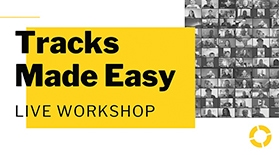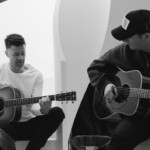Worship Teams
5 Ways to Make a Small Team Sound Big

We’ve all watched videos of big churches with 15 people on stage and heard the albums with 30 tracks on every song. While that looks and sounds great, that’s not what the Sunday platform looks like for most of us. The good news is you don’t have to have a big band (or a big budget!) to have a big sound.
There are five ways you can make your worship team sound bigger than it actually is.
- Get a Rhythm
A well-arranged song will sound great no matter how many band members you have and a good arrangement starts with a strong rhythm foundation. If you’re fortunate enough to have a drummer, this job falls on their shoulders. But what if you don’t even have a drummer? Any instrument can provide a rhythmic backbone. The key is to identify which one is going to do it.
The lead rhythm player may have to play differently than they usually do. For example, a pianist might need to simplify to pulsing block chords. A bass player might move away from long, sustained notes and play more percussively. An acoustic guitar can be a drum kit all on its own by strumming like a hi-hat and emphasizing snare hits with muting. Having a lead rhythm player creates clarity for the band and allows your team and your congregation to relax into the groove. - Fill the Frequency Range
Full sound comes from a full frequency range. To obtain that tone, you need to fill as much of the frequency spectrum you can with what you have.
In a typical band setting, the drums bring the thump, the bass guitar covers the low end, the keyboard covers the midrange, the guitars spread out over the mids and highs while the cymbals finish out the high end. If you don’t have all these luxuries, you have to get creative.
Look at your available band and ask yourself how to use each instrument to cover the maximum amount of range. If all you’ve got are two acoustic guitars, be sure one has a capo on the neck, so it’s filling a different space than the other. If you’ve got a Cajon or djembe, try adding a shaker to fill that higher range. Pianos are the only instruments that can cover the full spectrum alone. I recommend arranging the piano parts to fill the holes left by the other instruments rather than building around the piano. The more spread out you are, the more complete you’ll sound. - Be Dynamic
Dynamics are important in every song. The change in volume and intensity keeps a piece interesting and helps the band and the congregation knows where the song is heading.
While a large band can make subtle changes to create dynamics, smaller groups have to accentuate their efforts. Lows need to be lower so that highs can seem higher, and vice versa. Every section of a song should change dynamically.
Start by thinking about the impact each instrument can have on a section and use them accordingly. Is the bottom going to drop out of the first chorus? Are the percussion and bass going to carry that second verse? Maybe the track has the acoustic guitar throughout the entire song, but you need to save it for the second chorus. The more dynamic you are, the bigger your changes will feel. - Major on the Majors
One mistake musicians often make when learning and arranging a worship song is hyper-focusing on their own instrument. When you’ve got a small band, you need to identify the important parts of each song and find creative ways to recreate those. You can’t have a “not my instrument, not my problem” attitude!
Let’s say the electric guitar on the track might only be playing ambient textures until the last bridge, but those keyboards cover both the rhythm and the hook. Learning the keyboard hook so the piano player can focus on the rhythm will be the best way to serve the song.
Let’s use the song “Rescuer” by Rend Collective as an example. This song features very little electric guitar, but a banjo has a huge role. Learning the banjo line on the electric guitar is a great way to arrange this song for a smaller band and still sound close to the original arrangement.
As you begin doing this, you’ll find some instruments translate to another instrument better than others. You can often interchange a piano line with an electric guitar, and it sounds great! Maybe that piano line is really beautiful but doesn’t sound quite right on an acoustic guitar. You can try changing it a bit to adapt it or if that still doesn’t work, ask yourself what effect the piano line is having on the song. If it’s super important, try coming up with something similar. If not, don’t hesitate to cut it! - Play with Confidence
If you aren’t confident in your parts and your playing, you are bound to play tentatively. Tentative playing never sounds big! Take the time to really learn your parts. If you can’t play it in practice 100% of the time, you won’t feel good about it on the platform.
The way you hear yourself also can affect your playing. Make sure you can hear everything you need to. If you are too loud or quiet, be sure to get your levels set.
Big or small, there’s no “right” sound for worship music. Whatever the makeup of your worship band, the most important thing is that you serve the congregation you’ve been entrusted with, well. Be creative. Bring your best, and know that God will always bring His.

About Jason Houtsma
Jason Houtsma is the co-founder and guitar instructor for WorshipArtistry.com, a worship song tutorial service that arranges complex worship songs to be played with a five-piece band and vocals. His heart is to help musicians of every skill level play with passion and confidence. He’s also the worship pastor for Mosaic Church in Bellingham, WA, married to his best friend and dad to two rambunctious boys.






